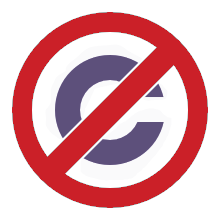Re: Over My Shoulder #12: Michael Fellman (2002), The Making of Robert E. Lee
Mark,
The passage above that you’re responding to is a quotation from a published book, Michael Fellman’s The Making of Robert E. Lee. I quoted the passage because I think the historical material in it is interesting and worth putting online. (Although it is in need of some factual corrections — among them the corrections that I included underneath the quotation, with the links to primary sources.) I certainly did not say that “it is unlikely Lee mistreated his slaves.†As you might guess if you read over my sarcastic remark at the end of the quotation about Lee’s protestations of innocence.
You don’t need to convince me that slavery was brutal or that Lee would have had the Norrises whipped after he forced them back into captivity. I’m already all over that. Michael Fellman is the dude who wrote what you’re responding to. But, in fact, you don’t need to convince Fellman, either; he already knows. He didn’t say that it was unlikely that Lee had the Norrises whipped after they were recaptured; he says that it was unlikely that Lee personally did the whipping of the female slave, Mary Norris. Which is probably right: rich landowners like Lee rarely did the whipping personally. The usual custom was to call in another man — often the overseer, or the local constable or sheriff — to do it for him. Fellman is well aware that whipping and other forms of physical torture were standard operating procedure for Southern slavers; as he himself writes: “… slavery was so violent that it cast all masters in the roles of potential brutes. … [C]orporal punishment (for which Lee substituted the euphemism “firmnessâ€) was an intrinsic and necessary part of slave discipline. Although it was supposed to be applied only in a calm and rational manner, overtly physical domination of slaves, unchecked by law, was always brutal and potentially savage.â€
For what it’s worth, Fellman’s inclination to believe that Lee called in a third party to do the whipping is corroborated by other evidence; according to Wesley Norris’s first-hand account, Lee first ordered the overseer, Gwin, to tie the recaptured slaves to a post and whip them; after the overseer refused, Norris says that Lee called in the “county constable,†Dick Williams.
My own view, and I expect Fellman’s view too, although I can’t speak for him, is that it doesn’t make any moral difference whether Lee personally held the whip when Mary Norris was tortured, or whether he handed the whip over to someone else and ordered him to do the torturing on his behalf. But while I don’t think it makes any difference, Lee would have thought that it made a moral difference — because, in the slaveholding culture of white Virginia, it was considered unseemly for a “gentleman†to personally, physically participate in lashing a slave, and especially unseemly for him personally, physically participate in lashing a woman. This helps explain why the accusations that Lee himself whipped Mary Norris were considered so sensationalistic at the time — even though Lee and all of his white friends and neighbors were perfectly comfortable with having slaves whipped; it also helps explain Lee’s indignant protests at the story, although, again, he had never hesitated to use whipping, chaining, and other forms of “firmness†against the people that he enslaved. It doesn’t change my reaction to what Lee did one bit whether he whipped Mary Norris himself, or whether he ordered someone else to do it for him; but it does help understand Lee’s reaction to some of the things that were said about him.
Hope this helps.
 Anticopyright.
Anticopyright.